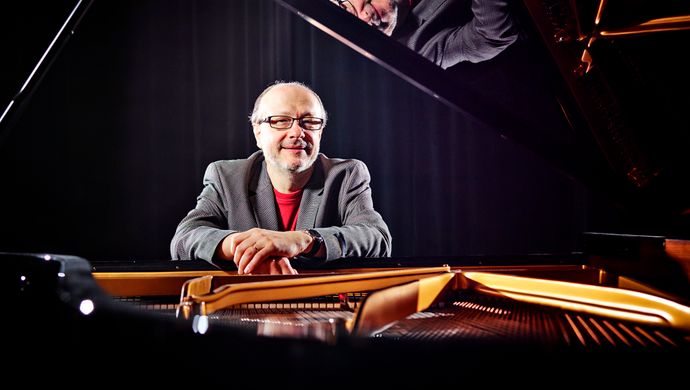Charles Ives
Masterpieces from the 20th century:
Concord Sonata
Charles Ives’ Piano Sonata No. 2 is perhaps the most important, most representative, and greatest composition in American cultural heritage. The work, as well as the recognition by the press and the public, were long in the making. It took more than forty years, seventeen revisions of the first edition, seven trial prints for the second edition, and at least as much courage and perseverance to create this fifty-minute colossus.
After his father’s death in 1894, Charles was searching for a new direction in his life. He found it in the writings of four authors who all lived in the picturesque town of Concord, Massachusetts, in the mid-19th century: Ralph Waldo Emerson, Nathaniel Hawthorne, the couple Bronson Alcott and Louisa Mary Alcott, and Henry Thoreau. Ives identified with their transcendentalist philosophy: the search for the spiritual, the higher self, and the meaning of life.
Beethoven’s music was a was a mirror for Ives’ soul, as both composers explored similar themes and created music that seemed to reach beyond the human realm. Ives’ piano sonata is partly a process of coming to terms with the death of his father, partly a musical reflection of his own philosophies, partly an ode to the writers and composers he admired, and partly an attempt to write – for the first time since Beethoven – a piece of music with ‘universal meaning that would be understood by everyone’.
Four movements, four sources of inspiration
In the first movement, Emerson, Ralph Waldo Emerson’s complex, metaphysical language is expressed in a deliberately complex language of thick chords and orchestral textures. The furious passages suggest his prose, the quiet ones his poetry.
Hawthorne was one of the first detective writers who addressed the question of guilt, and the second movement (‘Hawthorne’) alternates between the ‘saintliness’ (innocence) and ‘hypocrisy’ (guilt) of humanity, rendered through hymn-like music versus popular music and jazz sounds. The sounds of church bells – produced by using a wooden block – paint a picture of the tranquillity of the town of Concord. At the end of this movement, the pianist becomes possessed by the devil, as if running wild.
The climax of the sonata takes place in the third movement, named after the Alcott couple. Old man Bronson was known for his sonorous voice and his love of storytelling, especially about the past. For this movement, Ives returns to traditional tonality, a warm sound with an ecstatic jubilation, a triumphant ode to humanity’s enduring spirit, symbolised by the ‘human faith melody’.
The final movement, Thoreau, expresses the theme of the book Walden, which explores the relationship between man and nature. The sound of railway lines or industrialisation, characterized by ragtime, is eventually silenced by the serenity of the beautiful nature of Concord: Debussian wisps of fog, church bells, quotes from Foster’s nature songs, and the sound of Thoreau’s wooden flute, with which the writer called on the local lake for answers to questions about human existence. The piece ends under the peaceful starry sky in Concord, with a final goodnight whispered by the trees.
This is a translation of the original Dutch text by Ralph van Raat.





